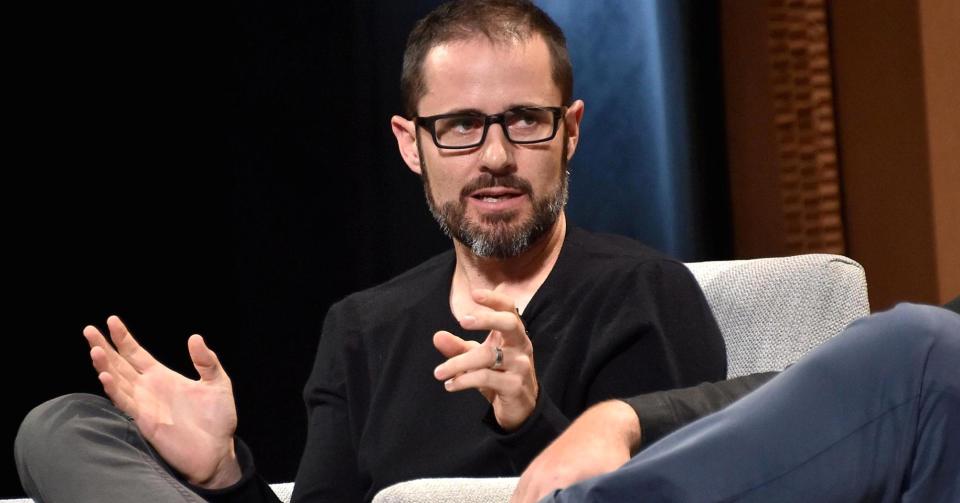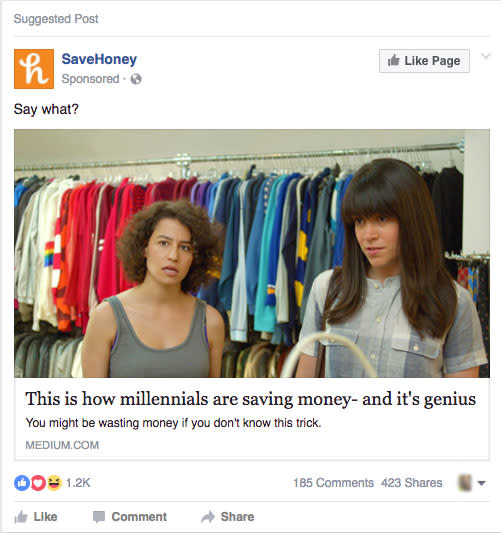Problems at publishing platform Medium affect many businesses — even HBO

The publishing platform Medium announced this week it would lay off 50 staffers, (nearly a third of its workforce), close two offices, and most notably, stop selling ads on its site. The bad news sent the media into a tizzy, which may be surprising to some —after all, Medium, launched by Twitter cofounder Ev Williams in 2012, is just a blogging startup with fewer than 200 employees and $130 million in venture funding.
But this news has an impact on many different publishers beyond Medium. The news has big implications for digital journalism, and even touches legacy print giant Conde Nast, and Time Warner-owned HBO.
Publishing partners, from The Awl to Bill Simmons
A number of independent media outlets had made deals, in the last two years, to migrate their sites over to Medium. The offer Medium made them: free web hosting (a big savings on content management system fees), tech support, and membership in Medium’s native advertising program, which it calls “Promoted Stories.” Medium sells the ads that run on certain stories from publishing partners; Medium and the publisher share revenues.
The founder of one early partner, movie blog Film School Rejects, told Poynter last September that it was working out: the site’s revenue was up; 60% to 70% of revenue was coming from Medium’s ad program; and partners could also sell their own sponsorships for some extra revenue. Medium now has more than 30 such partners.
But now Williams says, in his announcement, “It’s clear that the broken system is ad-driven media on the internet. It simply doesn’t serve people… And it’s getting worse.”
Medium will stop selling ads on its site, though it is expected to honor minimum revenue agreements it has with its partners — agreements that reportedly expire in May. That means its publishing partners have a few scant months to completely rethink their own business models.
Those partners include a number of respected independent publications like The Awl (a New York culture blog), The Bold Italic (a San Francisco news blog formerly owned by Gannett), Electric Literature, Femsplain, ThinkProgress, and Pacific Standard, an eight-year-old print magazine. These publishers completely ported their sites to Medium; they went all in, and are now left in the lurch.
And then there are sites that launched on Medium from their inception, such as The Cauldron (which was incubated at Medium but independently owned, and later partnered with Sports Illustrated for distribution), and most notably The Ringer, the sports and culture site founded by former ESPN personality Bill Simmons.
After ESPN shut down the longform website Grantland and cut Simmons loose, Simmons landed a talk show with HBO (that has since been canceled) and quickly recruited a list of popular writers for a new Grantland-type content site. That site is The Ringer, hosted entirely on Medium. HBO invested in The Ringer. Now what?
Politico reports that Medium did not give these publishing partners any advance notice of its shift. One publisher, The Establishment, was in the process of migrating to Medium when Medium’s announcement broke. “This is not the announcement post we had planned to publish today,” wrote the site’s founder. When Medium contacted its publishing partners only after posting Williams’ announcement, many were not pleased.
At least one of Medium’s partners are remaining calm. Sunil Rajaraman, CEO of The Bold Italic, took to Medium to say, “I am not freaked out.” Rajaraman writes that since moving to Medium, “our editorial process/workflow are much easier, we don’t have to pay AWS/Heroku bills, and we don’t have to deal with the basic ops of running our publication.” Partners can still sell memberships, which allows them to keep some of their content behind a paywall.
Revenue, Rajaraman writes, was only “one part of the equation” when The Bold Italic moved over to Medium. But for most publishers, it’s the most crucial part.
Medium’s own publications — and Conde Nast
In addition to hosting existing sites, Medium has launched some of its own publications along the way, and made acquisitions of publications. In 2013, it acquired the web magazine Matter, staffed up, and turned it into a science-focused sub-brand within Medium. It didn’t last long: by 2016, Medium spun off Matter into a separate company, Matter Studios, owned by Williams, and seemingly more of a strategy firm than an original publication.
But other Medium-owned original sites are still there, like Cuepoint, Medium’s music site, and Backchannel, its tech site. What will they do without native ads?
This question is now relevant to Conde Nast, which bought Backchannel from Medium just this past summer for an undisclosed amount. Backchannel joined Wired and Ars Technica as part of the newly formed Wired Media Group at Conde Nast, but continues to publish on Medium.
As part of the acquisition agreement, Conde Nast, and not Medium, sells the ads that run on Backchannel. Conde could continue to sell ads on Backchannel even once Medium has stopped selling ads on the rest of its platform, but at the very least, Medium’s pivot has shown that selling ads on Medium sites does not work.
So Conde may end up seeking a new strategy for generating revenue from Backchannel; don’t be surprised if it moves the site to its own CMS. Conde Nast declined to comment on the record for this story.
What went wrong at Medium
Of course, Ev Williams isn’t wrong about native ads vs. original content. It can create conflicts, it can mislead readers, and it makes journalists feel icky. But the alternatives for generating revenue with online content have been scant.
Medium had buzz since the beginning thanks to its connections to Twitter and thanks to Williams’ prior success building a blogging tool, Blogger, which Google acquired in 2003. Medium has often been praised for its clean design and easy-to-use tools (for both writers and readers, with intuitive passage-highlighting and sharing options). But its model has failed, which is at the very least disappointing in a digital media landscape already in dire straits and seeking innovation.
There may be a sweet spot for putting ads against original content, but Medium wasn’t finding it. Case in point: the site is rife with “blog posts” written by non-journalists that are actually thinly veiled plugs for a product or app, but aren’t marked as ads or sponsored content.
Take for example an October 2016 post entitled, “This is how millennials are saving money — and it’s genius.” The post is designed to look like a news story; consider the headline, and the sub-heading, which teases, “You might be wasting a ton of money if you don’t know this trick.” But it’s actually a 2-paragraph promotional rave for Honey, a Google Chrome extension that scans the web for coupons.
The post isn’t labeled on Medium as an ad or as sponsored content, and the author gives no bio and does not identify herself as a paid marketer. But a spokesperson for Honey confirms that the Medium post was created by an outside content marketing agency, paid for by Honey. And Honey also paid to promote the Medium post as a sponsored ad on Facebook.

Medium, when asked about the post, would only say, “Promoted Stories are labeled as sponsored content; this post is not part of our Promoted Stories program.” In other words, Honey didn’t pay Medium for the post. But Honey did pay an agency. Should Medium be obligated to label it an ad?
Brands, and individuals, are free to use Medium however they want — it’s an open platform. And Medium could argue that it’s not Medium’s responsibility to label promotional posts, even the intentionally misleading ones. But because the same ecosystem shows original news content alongside branded stories alongside brand posts that aren’t labeled honestly, the lines are lost.
Perhaps posts like this one are what Ev Williams has in mind when he writes, “The vast majority of articles, videos, and other ‘content’ we all consume on a daily basis is paid for — directly or indirectly — by corporations who are funding it in order to advance their goals. And it is measured, amplified, and rewarded based on its ability to do that. Period. As a result, we get…well, what we get.”
With all of its many pivots, it became less clear over time what exactly Medium is for. The site has smart, longform essays on film and cinema, emotional personal stories that go viral, but also corporate blog posts (here’s a bizarre one from Slack to Microsoft when Microsoft launched a Slack competitor), promotional posts shilling new apps, and marketing tips from social media “experts” plugging their own achievements. What is Medium’s brand identity? Everything, and thus, nothing.
It is a Wild West of content.
And that would be fine, if Medium had stayed a purely hands-off platform, like WordPress, where anyone can publish anything. But it also built out its own original content brands (unlike WordPress), and acquired existing, respected brands, which made it something else. It made Medium less neutral.
By trying to be too many things at once, Medium left its publishing partners in the lurch.
—
This story was updated on Jan. 12 to further clarify the acquisition agreement between Conde Nast, Backchannel, and Medium.
Daniel Roberts is a writer at Yahoo Finance, covering technology, media and sports business. Follow him on Twitter at @readDanwrite.
Read more:
Yes, Facebook is a media company
BuzzFeed reorganizes for the second time this year
Exclusive: BuzzFeed reshuffles, lets go of editorial staffers
